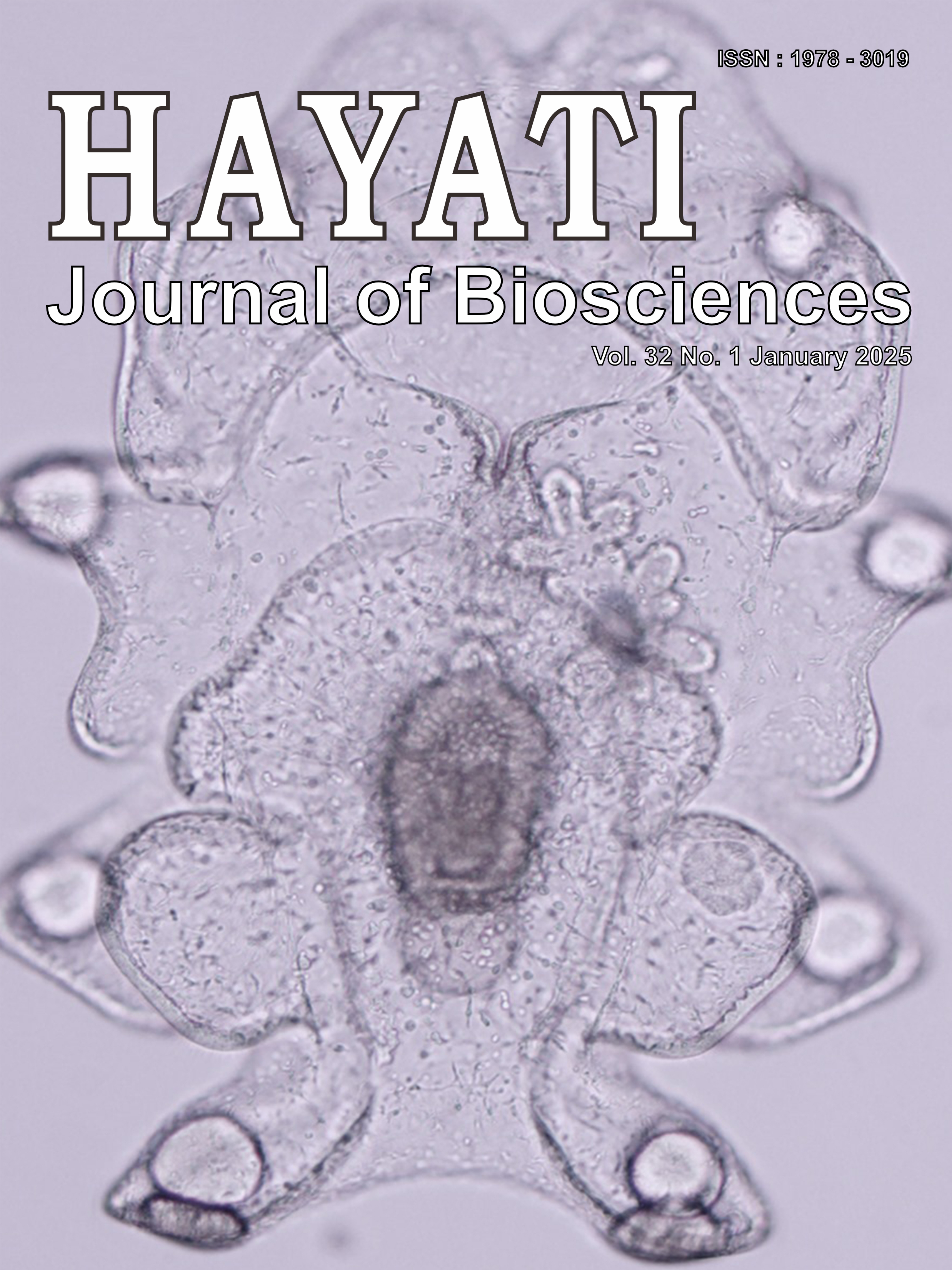Characterisation of ACE2-like Enzyme from Bacillus cereus sp. as an Alternative Treatment for COVID-19 Patients
Abstract
SARS-CoV-2 infection can lead to downregulation of ACE2, raising pro-inflammatory Angiotensin II levels. Recombinant human ACE2 protein therapy can restore homeostasis but is costly. An alternative is an ACE2-like enzyme with similar effects. The previous research identified a carboxypeptidase protein from Bacillus cereus sp. (rBceCP) as a potential ACE2-like enzyme, but it has not been characterized well. This study characterizes, expresses, and tests the activity of the rBceCP). rBceCP structure and properties were predicted using Prabi and Expasy. The in vitro approach included protein expression optimization, hydrolysis tests, and inhibition tests. In silico analysis revealed the protein is a homodimer with 53.66% α-helix and a molecular weight of 58.99 kDa. The protein is stable, hydrophilic, and has an isoelectric point at pH 4.93, indicating it can be expressed using the E. coli system. Expression of rBceCP showed no significant differences across IPTG concentrations (p-value >0.05). The protein hydrolysis activity of rBceCP was similar to the control, though purified samples had lower activity than crude samples. Inhibition activity in crude and purified samples showed no significant differences (p-value >0.05) and was higher than the control. Thus, rBceCP has potential as an ACE2-like enzyme and a therapeutic candidate for COVID-19.
Downloads
Copyright (c) 2025 Alya Sendra Maulida, Novi Arie Anggraeni, Azzania Fibriani

This work is licensed under a Creative Commons Attribution-NonCommercial 4.0 International License.
HAYATI J Biosci is an open access journal and the article's license is CC-BY-NC. This license lets others distribute, remix, tweak, and build upon author's work, as long as they credit the original creation. Authors retain copyright and grant the journal/publisher non exclusive publishing rights with the work simultaneously licensed under a https://creativecommons.org/

























.png) IPB University
IPB University Department of Biology
Department of Biology The Indonesian Biological Society
The Indonesian Biological Society 

